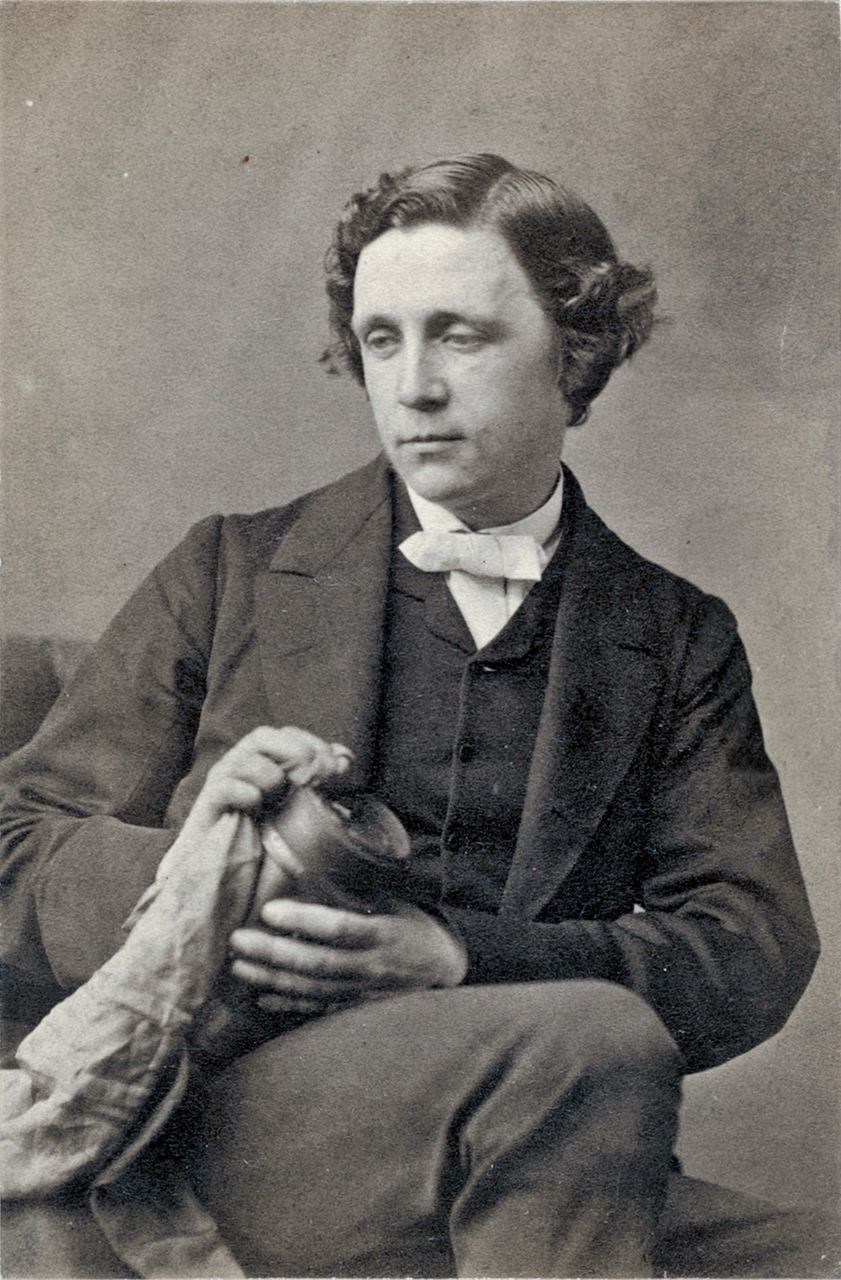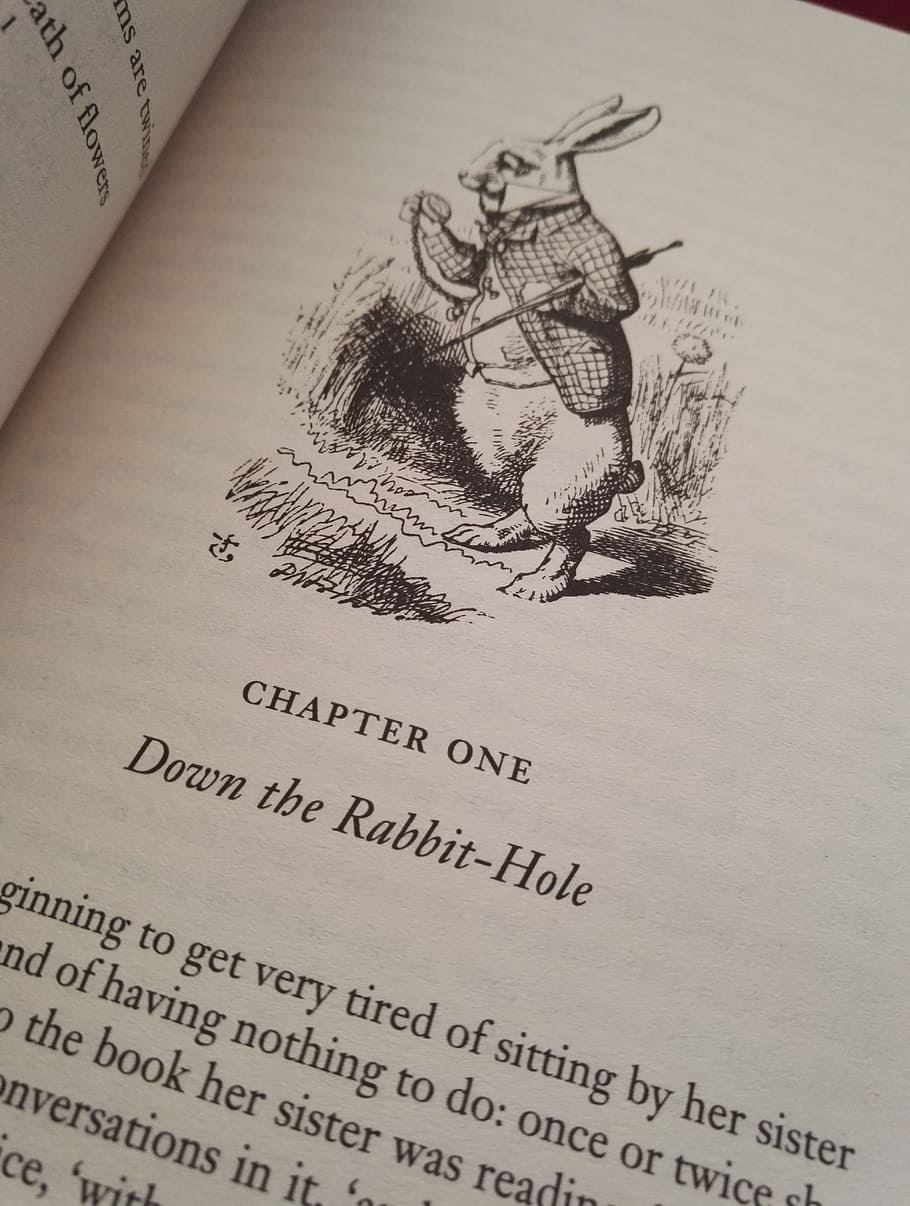“Curiouser and curiouser.” These are the words of Alice, the heroine of Alice in Wonderland. While most people can recall this scene from the movie or the book, one probably wouldn’t be able to pinpoint whose hands etched out these words. Lewis Carroll was the quiet, quirky, and somewhat eccentric author of the world of Wonderland. From singing flowers to flamingo croquet, Carroll was able to bring his magical world to life through his writing. His writing and his actions changed the world. He went from being ridiculed to being an inspiration to thousands of people. Lewis Carroll was able to overcome his disability, make the world a better place, and serve as an inspiration to future generations, making him a hero whose abilities went beyond his knack for writing.
 Lewis Carrollwikimedia commonsLewis Carroll was born as Charles Lutwidge Dodgson on January 27, 1832. According to Encyclopedia Britannica, he was the eldest son and third child in a family of seven girls and four boys. As a child, Carroll was quite shy and got bullied often in school. Despite this, Carroll was a brilliant student and graduated at the top of his class. He became a teacher and taught an all-girls school. Carroll was quite fond of his students and got along well with them. In 1865, Carroll published Alice in Wonderland, a gift for an old student of his. Alice in Wonderland went on to become one of the most popular books in the world. In addition to writing, Carroll had an interest in the arts, dabbling in both drawing and photography, but later giving them both up to focus on writing. After his success with Alice, Carroll continued to write other books and poems such as Alice Through the Looking Glass. Soon after he turned 66, Carroll died in Guildford, Surrey, a town in southern England, where he still rests to this day.
Lewis Carrollwikimedia commonsLewis Carroll was born as Charles Lutwidge Dodgson on January 27, 1832. According to Encyclopedia Britannica, he was the eldest son and third child in a family of seven girls and four boys. As a child, Carroll was quite shy and got bullied often in school. Despite this, Carroll was a brilliant student and graduated at the top of his class. He became a teacher and taught an all-girls school. Carroll was quite fond of his students and got along well with them. In 1865, Carroll published Alice in Wonderland, a gift for an old student of his. Alice in Wonderland went on to become one of the most popular books in the world. In addition to writing, Carroll had an interest in the arts, dabbling in both drawing and photography, but later giving them both up to focus on writing. After his success with Alice, Carroll continued to write other books and poems such as Alice Through the Looking Glass. Soon after he turned 66, Carroll died in Guildford, Surrey, a town in southern England, where he still rests to this day.
Although Carroll was certainly an accomplished person, he had disabilities of his own he struggled with. The Stuttering Foundation states, “Carroll was a person who stuttered, his family history gives credence to the discovery of the genetic link to stuttering. Carroll was born to parents who were first cousins; almost all of their eleven children, three girls, and seven boys struggled with stuttering past childhood.” Stuttering ran in Carroll’s family and Carroll was not an exception to this disability. Carroll was able to find ways to overcome this disability to pursue his interests. He found he often wouldn’t stutter while he was around children. People who knew Carroll stated, “When he spoke to these children, he lost his habitual stammer. He simply became one of them. This perennial childhood, together with the fantasy and poetry that sometimes expressed it, was his reality” (Lewis Carroll). Of course, Carroll often was ridiculed for this disability, but, “Stuttering did not stop Carroll. He brought to life many lasting and imaginative stories for children. His struggles and family history of stuttering further inspire and as help children who stutter” (Lewis Carroll). Instead of letting his stutter interfere, he faced it head-on. He worked hard despite what others thought of him. He was able to accomplish what others considered impossible for him to do. Alongside this, his accomplishments didn’t only affect him but were able to reach his community, providing a new and unique world for people to indulge in. Carroll persevered and was able to do the things he enjoyed, despite other people’s opinions.
 Nyctographwikimedia commonsAlthough Carroll is well known for his writing, he was an accomplished mathematician and logician as well, who strived to make the world a better place. The Lewis Carroll Foundation states, “A master logician, Dodgson's work in the fields of linear algebra, geometry, and puzzle-making is noteworthy. He wrote almost a dozen books that ranged from An Elementary Treatise on Determinants, With Their Application to Simultaneous Linear Equations and Algebraic Equations to The Game of Logic to The Theory of Committees and Elections. His interests and expertise widely varied; he also wrote the first printed proof of the Kronecker-Capelli theorem and a conceptual system for better governmental representation” (10 Fascinating Facts About Lewis Carroll). Carroll used his deep understanding of mathematics to help other people. He tried to increase the representation in the government of people who were not represented. His work and conceptualization of the British government gave way to ideas for creating a more equal government. In addition to this, the foundation states that, “Like a lot of writers, Dodgson was frustrated by losing the excellent ideas that inconveniently come in the middle of the night, so in 1891 he invented the nyctograph. The device is a card with 16 square holes (two rows of eight) that offers a guide for the user to enter a shorthand code of dots and dashes. Dodgson also considered it useful for the blind.” Once again, Carroll uses his knowledge to help others. In this case, he created a tool to help blind people read. He created a whole new system of reading for the benefit of blind people. His scientific and mathematical achievements show how dedicated he was to helping others.
Nyctographwikimedia commonsAlthough Carroll is well known for his writing, he was an accomplished mathematician and logician as well, who strived to make the world a better place. The Lewis Carroll Foundation states, “A master logician, Dodgson's work in the fields of linear algebra, geometry, and puzzle-making is noteworthy. He wrote almost a dozen books that ranged from An Elementary Treatise on Determinants, With Their Application to Simultaneous Linear Equations and Algebraic Equations to The Game of Logic to The Theory of Committees and Elections. His interests and expertise widely varied; he also wrote the first printed proof of the Kronecker-Capelli theorem and a conceptual system for better governmental representation” (10 Fascinating Facts About Lewis Carroll). Carroll used his deep understanding of mathematics to help other people. He tried to increase the representation in the government of people who were not represented. His work and conceptualization of the British government gave way to ideas for creating a more equal government. In addition to this, the foundation states that, “Like a lot of writers, Dodgson was frustrated by losing the excellent ideas that inconveniently come in the middle of the night, so in 1891 he invented the nyctograph. The device is a card with 16 square holes (two rows of eight) that offers a guide for the user to enter a shorthand code of dots and dashes. Dodgson also considered it useful for the blind.” Once again, Carroll uses his knowledge to help others. In this case, he created a tool to help blind people read. He created a whole new system of reading for the benefit of blind people. His scientific and mathematical achievements show how dedicated he was to helping others.
 Alice in WonderlandWikimedia CommonsWhen reading Alice in Wonderland, one thing that usually pops out is the quirky, distinctive style of writing. From humorous wordplay to making the illogical logical, Carroll’s style of writing is what makes his books so eye-catching. This unique style of writing influenced other popular authors, serving as an inspiration to them. James Joyce, the author of Ulysses, wrote a book whose writing style mimicked Carroll. This book, Finnegans Wake, included prominent wordplay and references to Carroll’s life. One such example from Finnegans Wake is, “So anyhow, melumps and mumpos of the hoose uncommons, after that to wind up that longtobechronickled gettogether thanksbetogiving day at Glenfinnisk-en-la-Valle, the anniversary of his finst homy commulion, after that same barbecue beanfeast was all over poor old hospitable corn and eggfactor, King Roderick O’Conor, the paramount chief polemarch and last preelectric king of Ireland (Joyce 203). Although the writing might seem incomprehensible and confusing, the way the words are combined are in a distinctly Carrollian style. Other authors drew inspiration and ideas from his works. He was looked up to and was a role model for others. His writing paved the way for a more unique, eccentric, and interesting style of writing. It is put best by The Lewis Carroll Society: “Lewis Carroll’s works and life have inspired countless other authors since his time, and continue to do so today. In some cases, Carroll’s characters, or their thinly-veiled counterparts, make surprise appearances in novels. Sometimes Carroll (or Mr. Dodgson) makes an appearance himself! In others, no Carroll characters appear, but the themes, wordplay, and general atmosphere of surreal nonsense and logical illogic are unmistakably ‘Carrollian’ (Fiction). Not only did his style of writing change the game, his fantasies and worlds were revered by other authors. Goodreads states that over 100 spin-offs of Alice have been created, all emulating his characters. It's easy to see that his works were a big influence on fictional storytelling. Carroll influenced the world with his books, making Alice, the Cheshire Cat, and the White Rabbit some of the world’s most recognizable characters. There is no doubt that the impact he left with his writing will live on for generations to come.
Alice in WonderlandWikimedia CommonsWhen reading Alice in Wonderland, one thing that usually pops out is the quirky, distinctive style of writing. From humorous wordplay to making the illogical logical, Carroll’s style of writing is what makes his books so eye-catching. This unique style of writing influenced other popular authors, serving as an inspiration to them. James Joyce, the author of Ulysses, wrote a book whose writing style mimicked Carroll. This book, Finnegans Wake, included prominent wordplay and references to Carroll’s life. One such example from Finnegans Wake is, “So anyhow, melumps and mumpos of the hoose uncommons, after that to wind up that longtobechronickled gettogether thanksbetogiving day at Glenfinnisk-en-la-Valle, the anniversary of his finst homy commulion, after that same barbecue beanfeast was all over poor old hospitable corn and eggfactor, King Roderick O’Conor, the paramount chief polemarch and last preelectric king of Ireland (Joyce 203). Although the writing might seem incomprehensible and confusing, the way the words are combined are in a distinctly Carrollian style. Other authors drew inspiration and ideas from his works. He was looked up to and was a role model for others. His writing paved the way for a more unique, eccentric, and interesting style of writing. It is put best by The Lewis Carroll Society: “Lewis Carroll’s works and life have inspired countless other authors since his time, and continue to do so today. In some cases, Carroll’s characters, or their thinly-veiled counterparts, make surprise appearances in novels. Sometimes Carroll (or Mr. Dodgson) makes an appearance himself! In others, no Carroll characters appear, but the themes, wordplay, and general atmosphere of surreal nonsense and logical illogic are unmistakably ‘Carrollian’ (Fiction). Not only did his style of writing change the game, his fantasies and worlds were revered by other authors. Goodreads states that over 100 spin-offs of Alice have been created, all emulating his characters. It's easy to see that his works were a big influence on fictional storytelling. Carroll influenced the world with his books, making Alice, the Cheshire Cat, and the White Rabbit some of the world’s most recognizable characters. There is no doubt that the impact he left with his writing will live on for generations to come.
The way Carroll was able to look past his disability, change the world for the better, and inspire others is what makes him a hero that should be remembered. A hero is someone who inspires others with selfless acts, and Carroll fits that definition. From writing Alice in Wonderland, to creating a way for people to use shorthand even in the dark, to being the inspiration for tons of stories, Carroll was able to influence the world to become a better place. Through his struggle with stuttering, he was able to teach me to pursue me passions despite what others thought of me. Through his achievements he was able to inspire me to make changes in my community for the good of others. And through his writing, he was able to provide a fictional world where I could immerse myself. Carroll changed the game with his contributions to the world, making him an everyday deserving hero.
Works Cited
“10 Fascinating Facts About Lewis Carroll.” Mental Floss, 5 Apr. 2018, www.mentalfloss.com/article/535136/10-fascinating-facts-about-lewis-carroll.
“Best Retellings of Alice in Wonderland (101 Books).” Goodreads, Goodreads, www.goodreads.com/list/show/27554.Best_Retellings_of_Alice_in_Wonderland
“Fiction.” Lewis Carroll Society of North America, www.lewiscarroll.org/carroll/study/fiction/.
Green, Roger Lancelyn. “The Riddle of Lewis Carroll.” Encyclopædia Britannica, Encyclopædia Britannica, Inc., 3 Oct. 2019, www.britannica.com/biography/Lewis-Carroll/The-riddle-of-Lewis-Carroll
Joyce, James. Finnegans Wake. Garland, 1978.
“Lewis Carroll.” Biography.com, A&E Networks Television, 11 Sept. 2019, www.biography.com/writer/lewis-carroll
“Lewis Carroll.” Stuttering Foundation: A Nonprofit Organization Helping Those Who Stutter, www.stutteringhelp.org/famous-people/lewis-carroll
Moktefi, Amirouche. “Lewis Carroll’s Diaries: The Private Journals of Charles Lutwidge Dodgson (Lewis Carroll)/The Logic Pamphlets of Charles Lutwidge Dodgson and Related Pieces.” History & Philosophy of Logic, vol. 39, no. 2, May 2018, pp. 187–200. EBSCOhost, doi:10.1080/01445340.2017.1407621.
Swan, D. K., et al. Alice in Wonderland. Longman, 1990.
Woolf, Jenny. The Mystery of Lewis Carroll: Discovering the Whimsical, Thoughtful and Sometimes Lonely Man Who Created Alice in Wonderland. St. Martin's Griffin, 2011.
Works Consulted
“10 Fascinating Facts About Lewis Carroll.” Mental Floss, 5 Apr. 2018, www.mentalfloss.com/article/535136/10-fascinating-facts-about-lewis-carroll.
“Best Retellings of Alice in Wonderland (101 Books).” Goodreads, Goodreads, www.goodreads.com/list/show/27554.Best_Retellings_of_Alice_in_Wonderland
“Fiction.” Lewis Carroll Society of North America, www.lewiscarroll.org/carroll/study/fiction/
Green, Roger Lancelyn. “The Riddle of Lewis Carroll.” Encyclopædia Britannica, Encyclopædia Britannica, Inc., 3 Oct. 2019, www.britannica.com/biography/Lewis-Carroll/The-riddle-of-Lewis-Carroll.
"Historical Context: Alice's Adventures in Wonderland." EXPLORING Novels, Gale, 2003. Gale In Context: High School, https://link.gale.com/apps/doc/EJ2111500063/SUIC?u=powa9245&sid=SUIC&xid=bcc591d1 Accessed 10 Dec. 2019.
Joyce, James. Finnegans Wake. Garland, 1978.
“Lewis Carroll.” Biography.com, A&E Networks Television, 11 Sept. 2019, www.biography.com/writer/lewis-carroll
“Lewis Carroll.” Stuttering Foundation: A Nonprofit Organization Helping Those Who Stutter, www.stutteringhelp.org/famous-people/lewis-carroll
Moktefi, Amirouche. “Lewis Carroll’s Diaries: The Private Journals of Charles Lutwidge Dodgson (Lewis Carroll)/The Logic Pamphlets of Charles Lutwidge Dodgson and Related Pieces.” History & Philosophy of Logic, vol. 39, no. 2, May 2018, pp. 187–200. EBSCOhost , doi:10.1080/01445340.2017.1407621.
"Scene from Alice's Adventures in Wonderland." EXPLORING Novels, Gale, 2003. Gale In Context: High School, https://link.gale.com/apps/doc/EJ2250016957/SUIC?u=powa9245&sid=SUIC&xid=c4715b34 Accessed 10 Dec. 2019.
Swan, D. K., et al. Alice in Wonderland. Longman, 1990.
Woolf, Jenny. The Mystery of Lewis Carroll: Discovering the Whimsical, Thoughtful and Sometimes Lonely Man Who Created Alice in Wonderland. St. Martin's Griffin, 2011.
Page created on 2/11/2020 3:25:17 AM
Last edited 2/12/2020 2:40:44 AM
